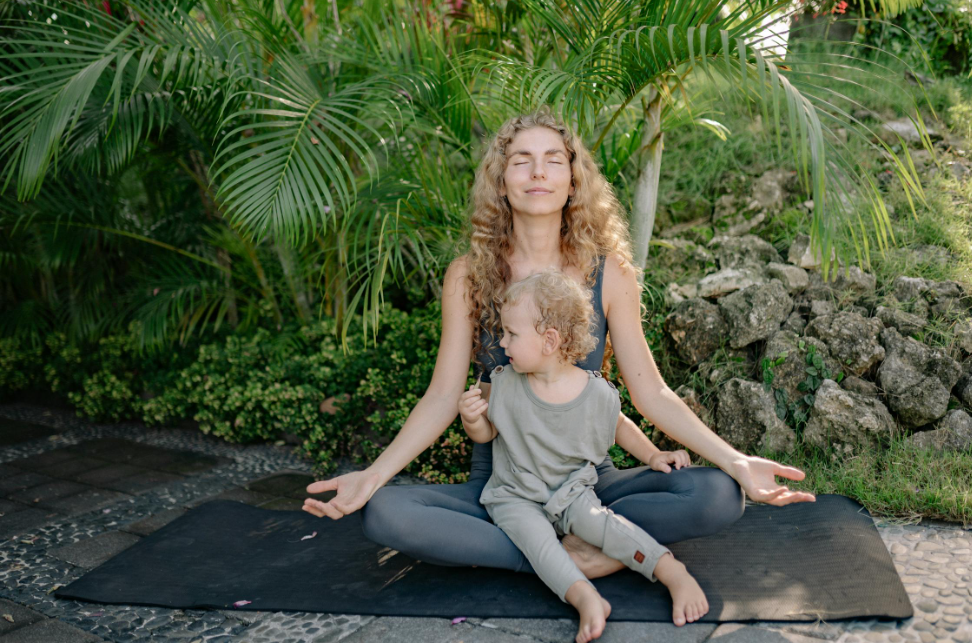In today’s fast-paced world full of distractions, our schedules often feel non-stop. We wake up early, go to work, hit the gym, care for the kids, walk the dog, do the laundry—and then night arrives, and the tasks keep coming. We make dinner, clean up afterward, drop in the plates and dishwasher sheets, and it still doesn’t end there. We tidy up the kids’ mess and start prepping meals for the next day. On those exhausting days when stress takes over, we may start experiencing that middle of back pain, making poor food choices, and losing sight of what truly matters. Life becomes a series of routines instead of meaningful moments. Practicing mindfulness can help us reconnect with the present and stay aligned with what’s happening here and now. No matter your situation, being mindful—even in small ways—can make a big difference.
Mindfulness has become more valuable than ever. It’s a practice that helps us stay in the moment, heighten our awareness, and improve our ability to concentrate amidst the daily chaos. Whether you’re aiming to enhance your focus at work, in your studies, or just in everyday life, mindfulness offers a straightforward yet profound approach.
Mindfulness isn’t just a trend—it’s a powerful tool for staying present and sharpening your focus. It’s about being aware of our thoughts, feelings, and surroundings in a calm and accepting way. By doing so, we can respond to situations more thoughtfully instead of reacting automatically. This practice helps us break free from the stress and overthinking that often pull us away from what’s important.
What is Mindfulness?

Mindfulness means paying close attention to the present moment without judging it. It’s about being aware of our thoughts, feelings, and surroundings in a calm and accepting way. By doing so, we can respond to situations more thoughtfully instead of reacting automatically. This practice helps us break free from the stress and overthinking that often pull us away from what’s important.
Easy Ways to Practice Mindfulness
Body Scan: Take a few minutes to pay attention to each part of your body, from your toes to your head. Notice any sensations without trying to change them. This exercise helps you relax and reconnect with your physical self, which can be especially soothing during stressful times.
Observe Your Surroundings: Use your senses to take in your environment. Notice the colors, sounds, and textures around you. This mindful observation helps anchor you in the present moment and sharpens your ability to focus on what’s happening right now.
Mindful Walking: When you’re walking, pay attention to each step you take. Feel the ground beneath your feet, the movement of your legs, and the rhythm of your breathing. Walking mindfully can be a refreshing break from the rush of daily life.
Eat Mindfully: Lena Bakovic, MS, RDN, CNSC at Live It Up says: Instead of eating on autopilot, take time to really taste and enjoy your food. Notice the flavors, textures, and even the sensations in your body as you eat. This mindful eating practice not only enhances your mealtime experience but also helps you tune in to your body’s hunger and fullness cues. You can explore VNutrition for easy and healthy new recipes.
Boxed Breathing: Breathe in for 4 seconds, hold for 4 seconds, and breathe out for 4 seconds, and so on until you feel grounded.
Mindfulness: 5, 4, 3, 2, 1 exercise. Identify 5 objects, 4 different sounds, 3 different textures, 2 smells and 1 taste. Focus on being present.
How do I integrate mindfulness into my daily life?
Beyond formal meditation sessions, integrating mindfulness into your daily routine can make a big difference in your ability to focus:
Do One Thing at a Time: Instead of multitasking, try focusing on one task at a time. Give it your full attention and notice how much more effectively you can complete it without distractions. Kat Beson, Certified Registered Dietitian at Top Nutrition Coaching says: Take a moment to explore a new recipe—try new flavors, smell the ingredients, and be present in the process.
Listen Mindfully: create a moment of connection by simply listening to music you enjoy. Focus on each sound, each note, and notice how it makes you feel.
When you’re talking with someone, really listen. Pay attention to their words and their emotions without planning your response in advance. This kind of mindful communication can deepen your connections with others.
Take Breathing Breaks: Whenever you feel stressed or overwhelmed, take a moment to pause and take a few deep breaths. This simple act can help calm your mind and bring you back to the present moment.
Research shows that practicing mindfulness regularly can improve your ability to focus, enhance your memory, and even boost your decision-making skills. By training your mind to stay present, you become better equipped to handle distractions and stay on task. Plus, mindfulness can reduce stress and increase your resilience, helping you navigate challenges more effectively both at work and in your personal life. It can also help decrease anxiety and worry.
Start with small steps
While the benefits of mindfulness are clear, building a consistent practice can be a journey, start with small steps like practicing mindful breathing for a few minutes each day, and gradually expand from there. Find a time and place that works best for you, whether it’s in the morning before your day starts or during a quiet moment in the evening.
Mindfulness means paying close attention to the present moment without judging it. Remember, every moment is an opportunity to reconnect with yourself and the world around you.






